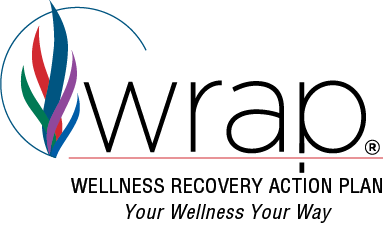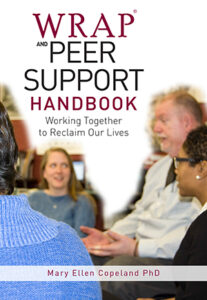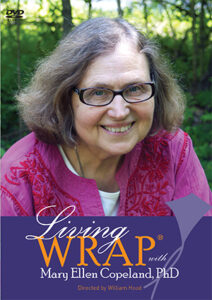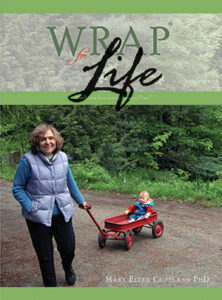Summertime is a time for taking trips and making memories.
If you are traveling by car, as 38 million of us will this summer, you may be ticking off the mile markers, eagerly wondering, “Are we there yet?” You’ll arrive tired but excited, barely stopping to unpack before hitting the beach or sampling the local delicacies.
Years from now, you’ll pore over photos that likely will live in the cloud, instead of in dusty albums. You’ll swap stories with your fellow travelers, adding to and embellishing them as you go. If you’re lucky, some of the people you meet along the way will become your lifelong friends.
 I’m on a journey myself this year, having reached one of those mile markers in life. I turned 75—where do the years go? As I look back on where I’ve been, and think about where I’m heading, three things have become clear.
I’m on a journey myself this year, having reached one of those mile markers in life. I turned 75—where do the years go? As I look back on where I’ve been, and think about where I’m heading, three things have become clear.
First, I have passed many mile markers along the way, though a few have only become clear in the rearview mirror.
Second, my fellow travelers have sustained me, and it’s their stories—more so than my own—that have made this journey unparalleled.
And third, I’m quite certain the answer to the question, “Are we there yet” is “no.” I’m on a lifelong journey that I’ve been honored to share with the readers of this page.
Over the next several weeks, I want to share with you a mini-travelogue. We’ll revisit some of the mileposts, become reacquainted with a few of my favorite traveling companions, and explore why the trip must continue. And so, it begins…
Milestone 1: Watching and Learning
My journey began when I was a young girl, just 8 years old. I watched in fear as a nurse with lots of keys unlocked numerous heavy doors, leading me and my four siblings to the large, noisy, scary room where we would have our brief weekly visit with my mother. She had experienced deep and seemingly intractable depression, and my father was told she was incurably insane. We visited every Saturday, even after the doctors told us not to come anymore.
Looking back, I think WRAP began there, in the mind of a small girl who became convinced that what was happening to my mother was wrong and bad, that there was no chance anyone could get well and stay well in this circumstance. In the room she shared with 40 others, my mother had no privacy, no rest, no peace. The only treatments were barbaric or ineffective.
Believed to be beyond help, my mother went on to recover (more about her next week). And I formed a thought in the back of my mind, “People can get over this.” But being a self-absorbed teenager, I went on about my life. I grew up, married and had a family, and became a total self-help junkie. I read every self-help book and article I could get my hands on. And because I was experiencing deep depression in my own life, I tried the things I learned. And a lot of them helped. Especially relaxation and stress reduction techniques, diet, and alternative options.
There I was, cruising down the road on autopilot until my life fell apart. My marriage disintegrated. My times of deep sadness increased, as did some puzzling times when for no good reason I felt absolutely terrific, better than I had ever felt in my life. At times my moods were so expansive, and I enjoyed them so much that I failed to notice the ominous signs that were becoming so clear to family and friends.
Milestone 2: Defying the Odds
After finding myself with no work and means to support myself, and after repeated hospitalizations and trials on stronger and stronger medications, I said to my psychiatrist, “How do people like me recover? How do they get well, stay well, and get on with their lives?” He said he would get that information for me at my next appointment.
I looked forward to that appointment with great anticipation. Finally, I was going to get some information that would lead me out of this morass. Imagine my disappointment when he told me there was no information of that kind. He said, “We have information on medication options and on treatment programs, but nothing on how people get well and move on with their lives.” I was astounded.
And it was then that the thought that had laid dormant in my mind for so long decided to stir. It said, “You need to talk to people like yourself—people who have all these horrid “symptoms” and life experiences. You need to ask them what helps. If you get information from enough people, you will be able to figure out what to do for yourself.”
Like my mother before, I defied the odds. I took the steering wheel and did what I was told I could never do. I created, mailed (this was in the days before email), and analyzed three separate surveys. I compiled what I had learned and began talking about it to others. At one conference where I spoke, they made me wear a green badge that said “client” and scheduled my talk for a converted bedroom, expecting few would attend. The room was overflowing, people standing in the hall, clamoring to get in.
I began traveling all over the country teaching people the simple, safe, self-help skills and strategies that I had learned through my studies. I self-published a book before that was in vogue, and then found a traditional publisher, without benefit of an agent. I was cruising now!
Milestone 3: Teaching the Teacher
Fast forward to 1997, a cold winter day in northern Vermont. Some 40 people with serious mental health issues braved the wind chill and the blowing snow to attend an 8-day training, where I shared with them the skills and strategies I had learned through my studies. I thought I had done a great job.
Then a woman stood up in the back of the room and said, “This is all well and good. But I have been in state hospitals all over the country and I wouldn’t have any idea how to organize these things to make them work in my life.” I heard her, and so did all the other people who were there. We made a commitment that day to keep meeting until we had come up with some kind of a system so that people could organize the skills and strategies, I had been sharing with them into their lives.
People I was told couldn’t sit still for 15 minutes spent 3 full days deliberating. Filling the walls with newsprint. Discussing this idea and that. Crossing things out. Adding new things. Until, after 3 days, it felt like we had something. And they decided to call it the Wellness Recovery Action Plan—which is “such a good acronym”—and so WRAP was born. The structure that they came up with is the same structure that is WRAP today.
I’ve heard it said that it takes years to become an overnight success. But in what feels like the blink of an eye, WRAP became a national, and international, phenomenon. We opened the Copeland Center in 2005 to keep up with requests for training. After exhaustive research, WRAP was named an evidence-based practice in 2011.
Unlike some trips that you plan in exacting detail (remember the old AAA triptik, long since replaced by Google maps and GPS?), this journey has had what some would consider unwelcome detours and bumps in the road. Yet, looking back, I prefer to see these events as important milestones that have led me to exactly where I need to be.
But I haven’t been on this journey alone. Next week, we’ll look back at some of my fellow travelers who have helped light my way.

Mary Ellen Copeland, PhD, developed Wellness Recovery Action Plan (WRAP) with a group of people with lived experience who were attending a mental health recovery workshop in 1997. She is the original author of the WRAP Red Book, as well as dozens of other WRAP books and materials. She has dedicated the last 30 years of her life to learning from people who have mental health issues; discovering the simple, safe, non-invasive ways they get well, stay well, and move forward in their lives; and then sharing what she has learned with others through keynote addresses, trainings, and the development of books, curriculums, and other resources. Now that she is retired, and that, as she intended, others are continuing to share what she has learned, she continues to learn from those who have mental health issues and those who support them. She is a frequent contributor to this site.








